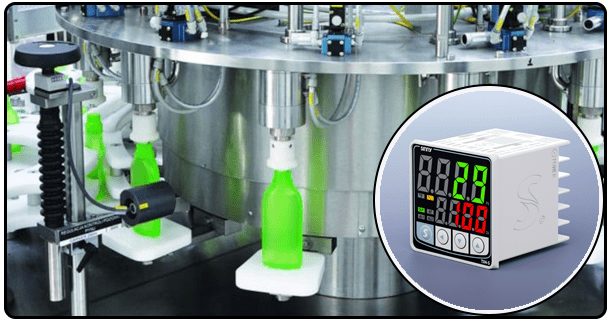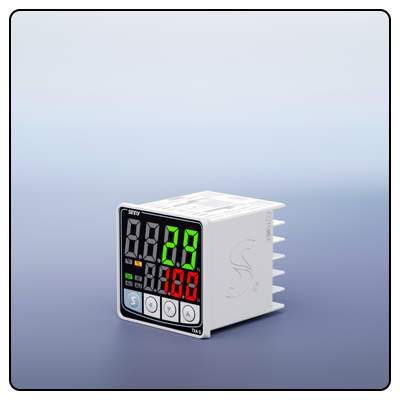How to Operate a Temperature Controller: A Step-by-Step Guide
Learn how to operate a temperature controller with our comprehensive guide. Discover tips on setup, configuration, tuning, and maintenance for precise temperature control.
1. Introduction
Temperature controllers are essential devices used in both industrial and laboratory settings to achieve precise temperature conditions, and maintain accuracy and reliability of temperature-dependent processes. In this guide we offer an introduction into using an effective temperature controller effectively.
2. Understanding the Components
Controller Unit:
A device which processes temperature data and adjusts output accordingly in order to maintain desired temperatures.
Output Devices:
These may include heaters, coolers or any other actuators which respond to signals sent out from a controller.
Power Supply:
Provides power for controller and output devices.
3. Initial Set Up
Install the Temperature Sensor* When beginning setup, place the sensor where its temperatures must be monitored.
Verify the sensor is properly mounted and connected to its controller.
To Connect a Controller to the Power Source:
It is essential to follow manufacturer's instructions when connecting your controller to an appropriate power source.
Before using any controllers or power supplies, verify all connections are secure and that power sources meet controller specifications.
Wiring the Output Devices: To wire output devices such as heaters or coolers to their controller's output terminals.
To prevent electrical hazards, always ensure all wiring is correct and secure.
Configuring the Controller
Setting Your Temperature Setpoint To access and set the temperature setpoint of a controller's settings menu. * If applicable (option 1). * Initially enter desired setpoint temperature here
This is the ideal temperature that the controller aims to achieve and keep constant.
Selecting the Control Mode:
To achieve optimal results from your application, choose an appropriate control mode such as on/off control or PID (Proportional-Integral-Derivative) control. These common options might include on/off switch controls or PID (Proportional-Integral-Derivative).
On/Off control can provide easy temperature regulation in less critical applications while PID control offers more precise temperature regulation.
Establish Alarms and Safety Limits: Set alarms so they will alert you if temperature varies significantly from its setpoint.
To protect against improper temperature settings for operation of the system, set safety limits that prevent its usage beyond safe temperature ranges.
4. Operating the Controller
By Turning On and Testing Out: * First turn on and verify the controller to be sure it works as desired.
Double check that the current temperature reading on the display is accurate.
Regular Monitoring of Temperature Readings on Display Panel* It is a best practice to regularly observe and record the temperatures displayed by your controller on its display panel.
Make sure that the temperature remains close to its setpoint and that the system remains reliable and safe.
Setpoint Adjusting as Needed: * Should temperatures deviate from their setpoints, make necessary changes to your controller settings to adapt.
Adjust the control parameters in order to achieve optimal performance.
Establish PID Parameters
5. Tuning the Controller
PID control utilizes three parameters - Proportional (P), Integral (I), and Derivative (D).
Proportional control adjusts its output based on any current errors (difference between setpoint and actual temperature).
Integral control adjusts output based on cumulative errors over time.
Derivative control adjusts output based on the rate of error change.
Tuning Options vs Manual Tuning: * Most modern controllers include an auto-tuning feature which automatically tunes PID parameters for maximum performance. This makes tuning even simpler!
If autotuning is unavailable or does not yield satisfactory results, manual tuning may be used instead.
Fine Tuning For Maximum Performance: * Begin by selecting low proportional gain values and gradually increase them until your system begins to oscillate.
Adjust the integral gain to eliminate steady-state error.
Increase derivative gain to prevent overshoot and improve stability.
Maintenance and Troubleshooting; 1. Regular Maintenance Tips: For optimal performance of both sensor and controller components, regularly examine them for signs of wear or damage to ensure optimal functioning.
To maintain optimal performance, regularly clean both sensor and controller to remove dust or debris which could impede performance.
Verify all connections are secure and that the system is properly grounded.
Common Issues and Solutions: * Sensor Errors: To correct sensor issues, be sure it has been installed and configured properly before replacing if faulty.
Inconsistent Temperature: To maintain consistency of temperature stability, adjust PID parameters or examine external factors which affect it.
Relay Malfunction: Test the relay to assess its functionality; replace if necessary.
Calibration Procedures: * To maintain accuracy in temperature readings and control settings, calibration should occur regularly with temperature sensors and controllers.
To achieve accurate calibration procedures, always refer to the instructions of your manufacturer.
6. Conclusion
Operating a temperature controller involves understanding its components, performing initial setup, configuring settings, and tuning control parameters to achieve precise temperature regulation for any given application. With regular maintenance and troubleshooting checks as part of ongoing troubleshooting procedures, an accurate temperature regulation solution should result. By following the advice in this guide you can achieve precise temperature regulation of any given space or application.
- how to set up a pid temperature controller,Make the controller better
- How to Set Up a PID Temperature Controller: A Comprehensive Guide























